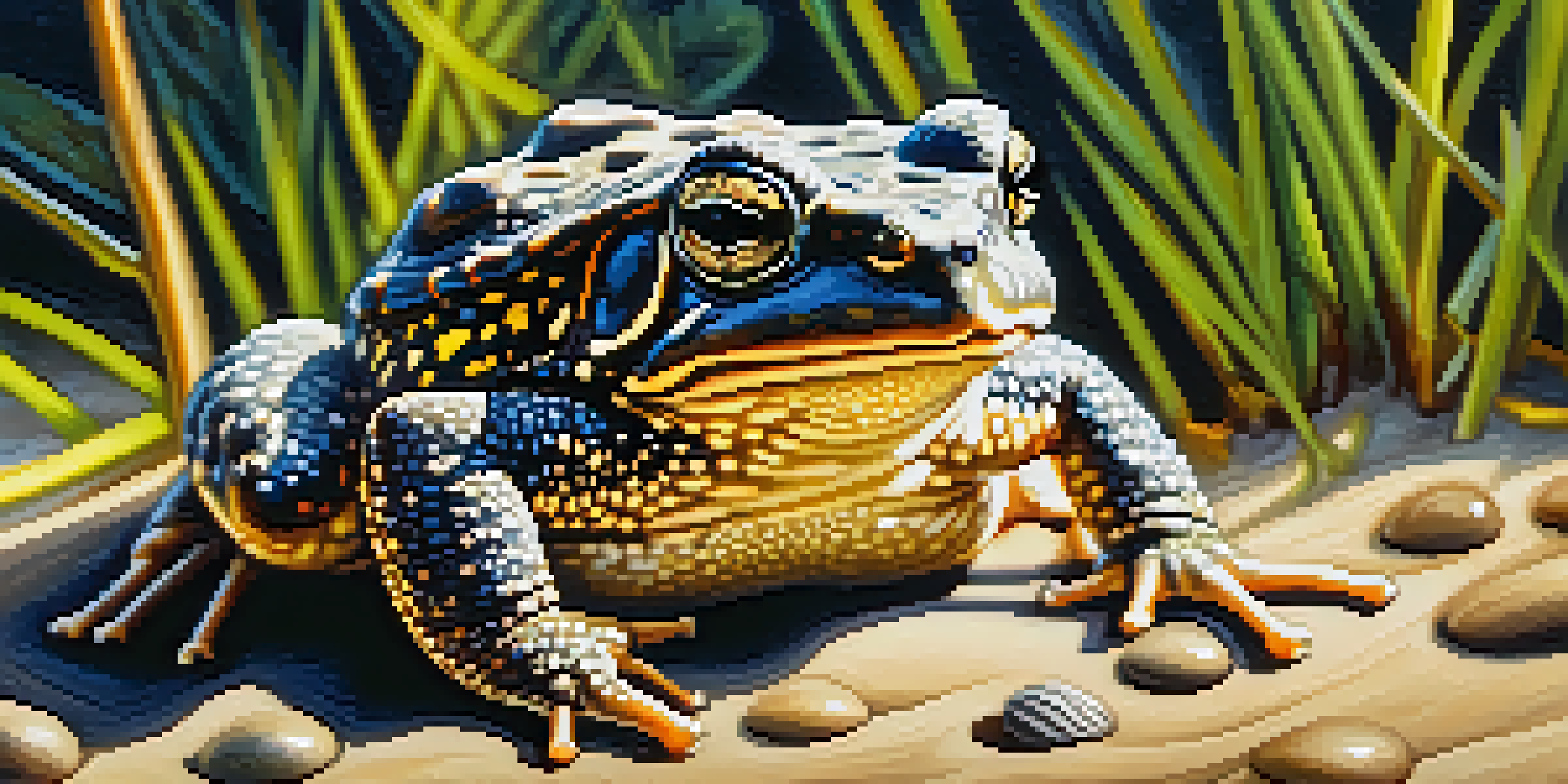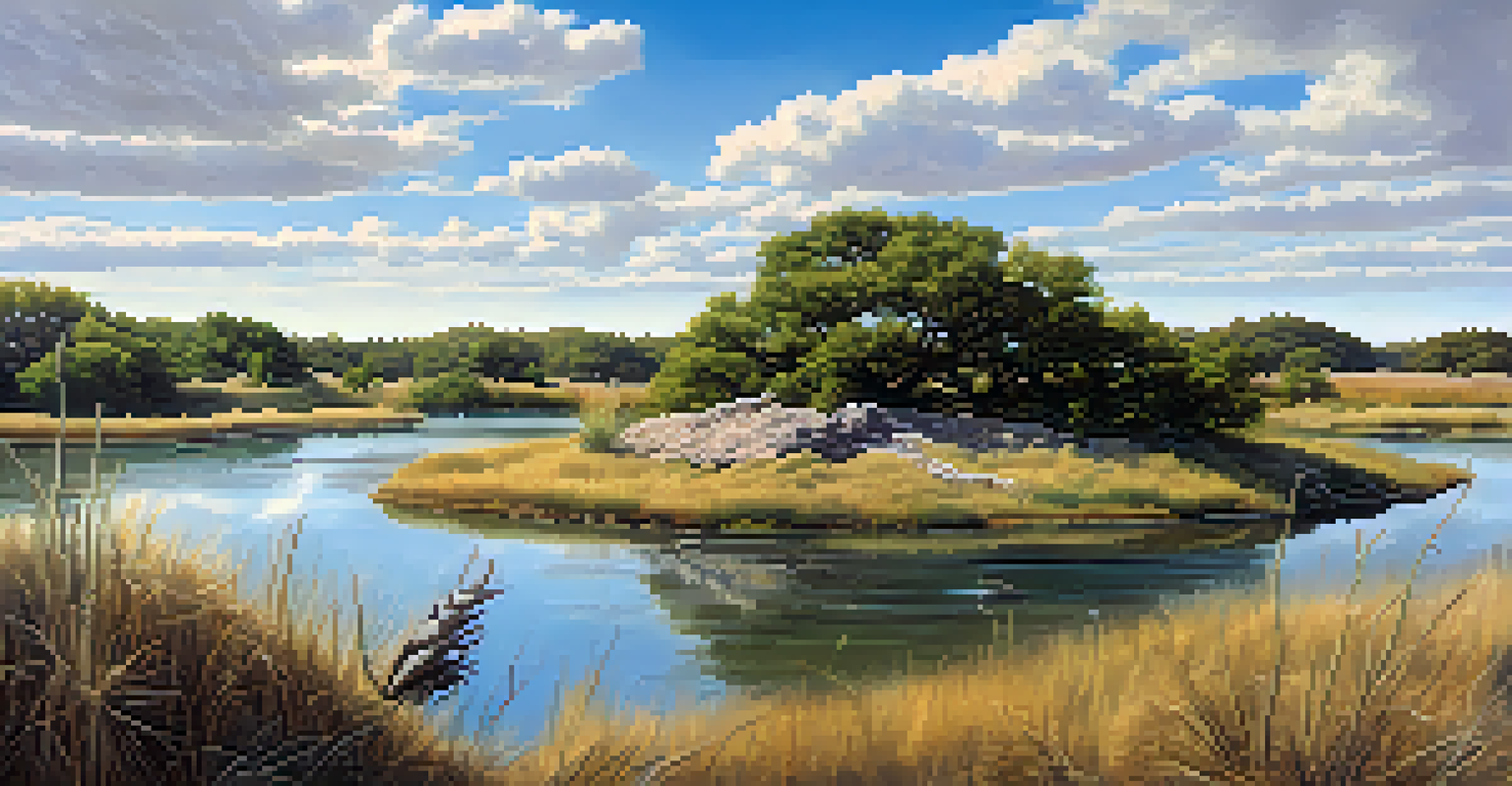Endangered Species in Austin: Conservation Strategies

Understanding Endangered Species in Austin
Austin is home to a diverse array of wildlife, some of which are facing the threat of extinction. Species like the Houston toad and the golden-cheeked warbler are on the endangered list due to habitat loss and environmental changes. Understanding these species is crucial, as they play important roles in our ecosystem, contributing to biodiversity and ecological balance.
The greatest threat to our planet is the belief that someone else will save it.
The reasons behind their endangerment often stem from urban development, pollution, and climate change. As Austin continues to grow, it’s vital to recognize the impact our actions have on these vulnerable species. By raising awareness, we can foster a community that values and protects our local wildlife.
Moreover, learning about these species can inspire individuals to take action, whether through volunteering, advocacy, or simply being mindful of their environmental choices. Every small effort counts, and understanding the plight of endangered species is the first step towards meaningful change.
Key Endangered Species Found in the Area
Several endangered species call the Austin area home, each with unique characteristics and habitats. The Houston toad, for example, is notable for its distinct appearance and is primarily found in sandy soils within central Texas. On the other hand, the golden-cheeked warbler, known for its beautiful song, relies on specific oak-juniper woodlands for nesting.

Another significant species is the Texas horned lizard, which faces declining populations due to habitat destruction and pesticide use. These species are not just fascinating; they serve as indicators of the health of our local ecosystems. Protecting them means safeguarding the natural environment they inhabit.
Endangered Species in Austin
Austin is home to endangered species like the Houston toad and golden-cheeked warbler, which are vital for maintaining ecological balance.
By highlighting these species, we can better understand their needs and the challenges they face. This knowledge can galvanize community efforts to support their conservation, ensuring that future generations can appreciate Austin's rich biodiversity.
The Role of Local Organizations in Conservation
Local organizations play a crucial role in the conservation of endangered species in Austin. Groups like the Austin Nature & Science Center work tirelessly to educate the public and promote awareness about local wildlife. Their efforts often include community events, workshops, and volunteer opportunities focused on habitat restoration and species monitoring.
In every walk with nature, one receives far more than he seeks.
These organizations collaborate with government agencies and other nonprofits to implement conservation strategies that are effective and sustainable. By pooling resources and expertise, they can take on larger projects that may have a more significant impact on preserving endangered species.
Community involvement is also essential; local organizations often rely on volunteers to help with various initiatives. This creates a sense of shared responsibility and empowers individuals to contribute to conservation efforts, fostering a strong connection between the community and its natural environment.
Conservation Strategies: Habitat Preservation
One of the most effective conservation strategies for protecting endangered species is habitat preservation. By safeguarding the natural environments where these species thrive, we can help ensure their survival. In Austin, efforts are underway to preserve critical habitats through land acquisition and conservation easements.
Local governments and organizations work together to identify key areas that need protection, such as wetlands, forests, and grasslands. These areas not only support endangered species but also contribute to the overall health of the ecosystem, benefiting all forms of wildlife and human residents alike.
Community Engagement is Key
Local organizations rely on community involvement and education to foster awareness and support for conservation efforts.
Additionally, community awareness and participation in habitat preservation initiatives are vital. By engaging local citizens in these efforts, we can foster a deeper appreciation for the environment and encourage sustainable practices that protect these precious habitats.
Community Engagement and Education Efforts
Engaging the community in conservation efforts is vital for the success of endangered species protection. Educational programs in schools and community centers raise awareness about local wildlife and the challenges they face. By fostering a love for nature among residents, we can inspire future generations to become stewards of the environment.
Events like nature walks, guided tours, and workshops provide hands-on learning experiences that deepen understanding and appreciation for endangered species. These activities often highlight the importance of biodiversity and the interconnectedness of all living things, making conservation relatable and meaningful.
Social media campaigns and local outreach also play a significant role in spreading awareness. By sharing stories and information about endangered species, we can connect with a broader audience and rally support for conservation initiatives in Austin.
Legislation Supporting Endangered Species Protection
Legislation is a critical element in the fight to protect endangered species. The Endangered Species Act (ESA) is a key piece of federal legislation that aims to protect critically endangered plants and animals as well as their habitats. In Austin, local laws and regulations also support conservation efforts, ensuring that development projects consider the impact on vulnerable species.
These laws help to create safe spaces for endangered species to thrive, providing essential protections against habitat destruction, pollution, and other threats. They also promote recovery plans that outline specific actions needed to help species rebound.
Legislation Supports Conservation
Strong legislation, including the Endangered Species Act, is crucial for protecting vulnerable species and their habitats in Austin.
Advocating for strong legislation is essential for the ongoing protection of endangered species. Individuals can engage with local representatives and participate in public meetings to voice their support for conservation initiatives and ensure that wildlife protection remains a priority.
Future Challenges and Conservation Opportunities
Despite the efforts made, challenges remain in the conservation of endangered species in Austin. Climate change, urbanization, and habitat fragmentation continue to pose significant threats. As the city grows, balancing development with conservation becomes increasingly complex, requiring innovative solutions that prioritize both progress and preservation.
However, these challenges also present opportunities for collaboration and growth. By fostering partnerships between government entities, nonprofits, and the community, we can develop creative approaches to protect endangered species while accommodating urban development.

Moreover, advancements in technology and research can aid conservation efforts, providing data to inform strategies and monitor progress. By embracing these opportunities, Austin can lead the way in demonstrating how urban areas can coexist harmoniously with their natural surroundings.